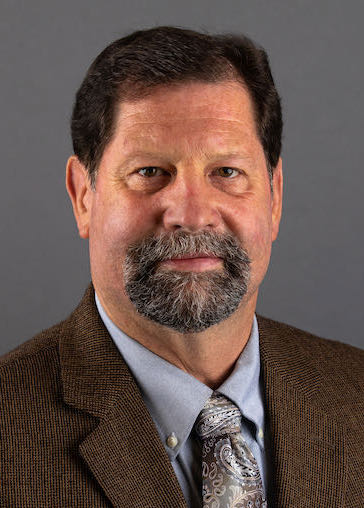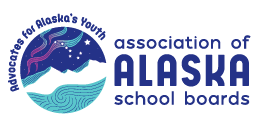Preserving Local Governance

Since the last session of the 33rd Legislature, it has become increasingly evident that respect for the local governance of school districts is under pressure. This is resulting in a push towards statewide policies promoted by the Governor’s office, the State Board of Education, and the Commissioner of DEED.
Often, the justification for these proposed changes—such as bypassing local school boards and allowing the State Board of Education to operate as a separate charter school authorizer—rests on the claim that local boards are opposed to parental involvement and engagement. This leads to the assertion that these boards are inhibiting parents’ rights to educate their children according to their preferences. The underlying implication is that local boards, composed of parents, grandparents, community members, and neighbors, are somehow obstructing the delivery of quality public education, either for questionable reasons or because they lack understanding.
However, Alaska has a long history of acknowledging and empowering local citizens to create school boards intended to govern a local system of public education that is responsive to the communities they serve.
In 1917, the 3rd Territorial Legislature established the first school boards outside of incorporated towns. Prior to this, schools were primarily provided and governed by the federal government, often with the involvement of various religious missionaries. One of the most notable figures in this effort was Presbyterian minister and missionary Sheldon Jackson.
Later, in 1929, the 9th Territorial Legislature “… established a public school system and the Territorial Board of Education. The bill authorized any town, village, or settlement in the Territory with a population of more than 100 and at least 30 children between the ages of six and 17 to incorporate as a school district. School boards were also authorized to create Citizen Night Schools for adults and minors over the age of 16. Schools were required to teach U.S. history and government.” And thus, the history of local school boards was officially started.
So, what were the purposes for this established system of school governance? Here are some possible reasons:
- Decentralization of Education: Establishing local school boards was a way to decentralize the education system, giving communities more control over their schools and adapting to local needs and circumstances.
- Accountability and Efficiency: Local school boards could be held accountable by the communities they served, ensuring that schools were responsive to local needs and operated efficiently.
- Community Involvement: The creation of local school boards encouraged community involvement in education, leading to greater support and participation.
- Flexibility and Adaptability: Local school boards had more flexibility to adapt to changing conditions and local priorities, allowing for a more responsive education system.
Do these concepts sound familiar? I believe they do. Nearly 100 years ago, territorial leaders recognized that local governance offered the best chance for successfully implementing a public education system. The territorial government and the Territorial Board of Education understood their role was to support and assist wherever possible.
By 2024, the situation has nearly reversed. Now, school boards and communities must unite to resist the overreach of state policymakers who seek to minimize local governance by imposing a one-size-fits-all approach to policy and regulation.
In February 2021, during the height of the pandemic, I wrote an article for Commentary. It’s interesting and somewhat concerning that three years ago, the trend toward centralized, prescriptive governing began to emerge. A part of the article argues for maintaining nonpartisan school boards. However, more relevant to our current situation is the urgent need to vigorously defend local governance.
“Alaska’s model of school governance is most likely one of the purest forms of representative democracy that exists. Any qualified citizen1 of a municipality, borough, or regional education attendance, no matter their political leanings or affiliations, profession, ethnicity, religion, gender, or level of education, may run for the office of school board member. The elections are nonpartisan, meaning each school board member’s seat is not aligned with a political affiliation. There are no recognized political majorities or minorities on school boards. Thus, any qualified resident1 of the community has the opportunity to be a representative voice for governing the local educational system. This was the specific intent of the founding legislature and the Alaska Constitution.
At statehood, Alaska had a dual system of education. Municipalities and boroughs provided a system of public schools, while in the rest of Alaska, the Bureau of Indian Affairs provided education to rural communities and Alaska Native populations. A statewide system of locally controlled schools was not fully realized until adequate public funds became available to the state due to the North Slope oil resources. Even then, the development of a state system of education through local governance has been a challenging experience, fraught with a multitude of inequities. But perhaps one of the best outcomes of our current system is that local leaders and school boards have the opportunity to voice their needs, even if that has meant suing the very system they are a part of to ensure equity of opportunity for every child they are educating. That struggle continues to this very day.
For more than a decade, we have seen increasing pressure by political forces and state or federal lawmakers to diminish local control of school governance. There always seems to be this notion that somebody has the one right answer. The COVID-19 pandemic has undoubtedly demonstrated that that is not the case. Now more than ever, we know the importance of finding local solutions. It is not easy work. The pandemic has shown us there is no one “right answer” for students and families. But, working at the local level, through local school boards, the chance for finding the several best answers is far more likely. No one knows your communities and the needs of your students better than you do.
So, this brings me to my point. In order to maintain and protect local control, school boards have to govern with the mindset that working together as local, nonpartisan citizens in the single pursuit of educating children is the primary objective. Don’t become distracted by the politics of our divisive times. Maintain the effort and the advocacy to obtain the resources and tools each school needs to educate students. Be protective and jealous of the local responsibility you carry as a school board member, for if you ever give it up, it will never be regained. The staff at AASB often reflect upon a phrase that helps us understand our purpose – are we talking about big people problems or little people problems? It is pretty simple and yet so hard to do sometimes.”
“The mission of the Association of Alaska School Boards is to advocate for children and youth by assisting school boards in providing quality public education, focused on student achievement, through effective local governance.”
1AASB Board Bylaw 9210 – An individual with the following qualifications is eligible to be a member of the School Board: 1. is a citizen of the United States; 2. is 18 years of age or older; 3. is a registered voter in the State of Alaska; 4. has been a resident of the school district for 30 days immediately preceding the election (or appointment); and 5. is not disqualified from voting due to: a. conviction of a felony involving moral turpitude, assuming voting rights have not been restored; or b. a court finding of incompetency, unless the disability no longer exists.
